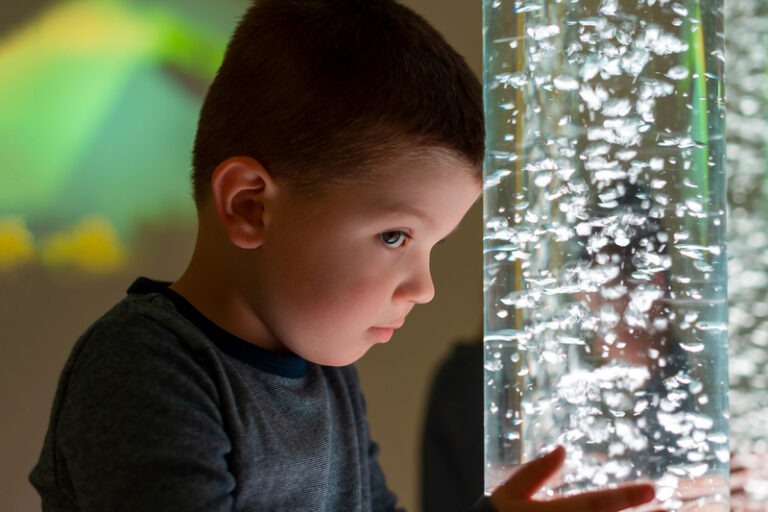
By Sara Marberry — A few weeks ago, I posted an article by Rachael Ferrell at HKS on my LinkedIn feed about new design trends in behavioral health that talked about sensory rooms.
As one of my followers correctly pointed out, sensory rooms themselves aren’t new — Snoezelen multi-sensory rooms were introduced by the Dutch in the mid-1970s as therapy for people with autism and other developmental disabilities, dementia, and brain injuries. They are in institutions all over the world, but are especially popular in Germany, where more than 1,200 exist.
I’d never heard of Snoezelen rooms. And I’ve been in this industry 30+ years.
But apparently, there are five of them at Texas Children’s Hospital in Houston. Google “Snoezelen rooms in U.S. hospitals,” and you’ll find a bunch more — including one at the Shirley Ryan AbilityLab in Chicago.
What is new to healthcare?
So okay, sensory rooms aren’t new to healthcare.
But perhaps what is new is the idea of creating a personalized patient experience through custom-curated tactile features, projected imagery, sounds, and smells. For example, HKS sensory therapy prototypes have shown that patients struggling with a balance disorder known as proprioception respond positively to spaces that “support deep pressure activities and resistance exercises with consistent intensity.”
Other design trends cited by Ferrell are:
- Soothing spaces that incorporate virtual reality with TMS treatment
- Sustainable and resilient design
- Spaces that support staff well-being
Need for more product innovation
De-institutionalizing the look and feel of behavioral and mental health spaces with color, materials, and furnishings has been a design focus for a while now, with more product choices than ever before on the market. Molded furniture, ligature-resistant doors and fixtures, and calming textile patterns are trending.
Manufacturers continue to innovate, but some interior designers I spoke with recently still say there is a need for more innovation.
Many, including me, were surprised when Pineapple Furniture’s Boden Rocker won a Best of Competition Nightingale Award at last year’s Healthcare Design Conference + Expo. How could a bean bag chair for behavioral health environments be that special?
Designed to provide gentle, controllable vestibular stimulation, according to Pineapple, “the shape, size and softness of the chair offers tactile (touch) and proprioceptive (sense of body positioning) inputs which provide a supportive feeling of reassuring wrap-around contact.
The issue of cleanability
When you sit in the Boden beanbag Rocker, you do feel good. At least I did. Those designers I spoke with, though, were skeptical about its cleanability.
Ah yes, cleanability. Always the issue in healthcare environments. Is it possible to sanitize an entire bean bag chair? Probably, but it can’t be easy, and easy is always what the environmental services people want.
Come to think about it, how do you clean a sensory room? That can’t be easy either.
See also: “Marberry: Tackling hospital workforce challenges through operational and facility design strategies” on The McMorrow Reports Healthcare channel as well as more insights on Sara Marberry’s Blog.
